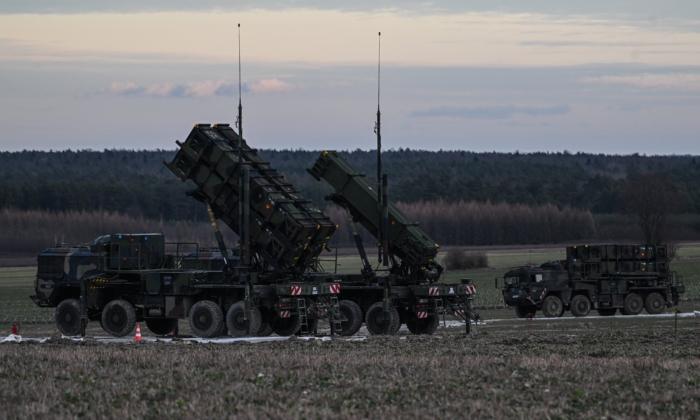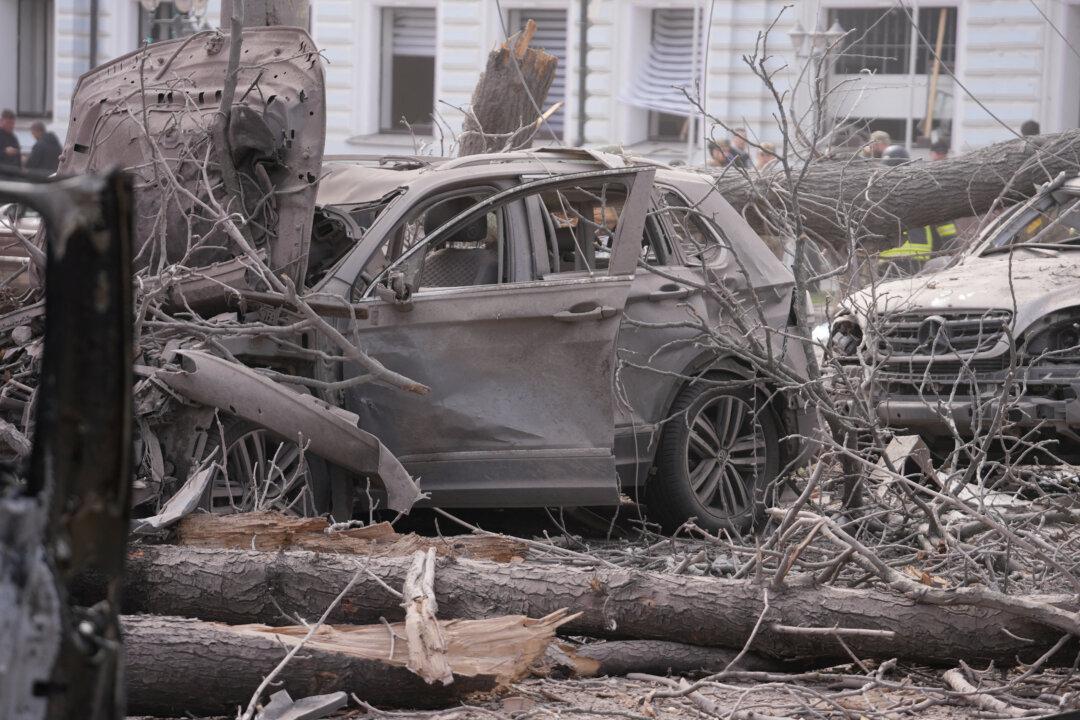Over the past month, NATO member Poland has bolstered its military presence on its border with Belarus, a close Russian ally. The move has raised concern that the ongoing war between Russia and Ukraine could escalate into a wider conflict.
On July 21, German Defense Minister Boris Pistorius stressed Berlin’s readiness, backed by NATO, to support Poland’s defense of the alliance’s eastern flank.
The following day, Boris Gryzlov, Moscow’s envoy to Minsk, warned that Russia and Belarus—which are bound by their own military alliance—were prepared to counter all threats to their collective security.
Quoted by Russia’s TASS news agency, Mr. Gryzlov said: “Warsaw, and the West in general, should realize our countries are ready to repel any threat. ... We have all the capabilities to do so.
“The first step of NATO’s or any other aggressor’s troops across the Belarusian border will be their last one.”
Since Russia invaded Ukraine early in 2022, military cooperation between Moscow and Minsk has ramped up significantly. Last year, Moscow dispatched thousands of troops and substantial military hardware to Belarus.
Earlier this year, Moscow unveiled plans to station nuclear weapons on Belarusian territory. In June, Belarusian President Alexander Lukashenko said a number of Russian tactical nuclear weapons had already been transferred to the country.

Belarusian President Alexander Lukashenko speaks to journalists during his visit to a military-industrial complex facility in the Minsk Region, Belarus, on June 13, 2023. Press Service of the President of the Republic of Belarus/Handout via Reuters
Wagner ‘Provocation’
Tensions along the 250-mile-long border were heightened with the recent arrival of Russian Wagner Group fighters in Belarus, where they’re helping train units of the Belarusian military.The training is reportedly being conducted at a military facility near Poland’s border.
Last month, Wagner chief Yevgeny Prigozhin, along with thousands of fighters, staged a short-lived mutiny that had briefly appeared to threaten Moscow itself.
However, the crisis was quickly averted after Mr. Lukashenko brokered a de-escalation deal between Mr. Prigozhin and Moscow.
Under the deal, Wagner fighters were allowed to relocate to Belarus, prompting fears that their presence could serve to destabilize an already tense region.
“We assume the Wagners aren’t going to Belarus to recuperate but to carry out a mission,” Stanislaw Zaryn, Poland’s deputy minister coordinator of special services, said in early July.
“This mission could be aimed at Poland but also against Lithuania or Ukraine.”
Following the arrival of Wagner fighters in Belarus, Warsaw announced plans to deploy additional military personnel near the Belarusian border.
Citing “possible threats,” Zbigniew Hoffmann, head of the Polish government’s security committee, said Warsaw had decided to “move our military formations from the west to the east of Poland.”
Speaking to Poland’s PAP news agency on July 19, Mr. Hoffman went on to describe the Wagner Group’s presence as a “provocation.”
It wasn’t the first recent Polish military deployment of its kind.
In the immediate wake of Prigozhin’s aborted rebellion, Warsaw sent 500 police officers to the Belarusian border. A week later, Poland announced the deployment of more than 1,000 army troops to the country’s east.
“This is a demonstration of our readiness to respond to attempts at destabilization near the border,” Polish Defense Minister Mariusz Blaszczak said on July 8.

Fighters of Wagner private mercenary group pull out of the headquarters of the Southern Military District to return to base, in the city of Rostov-on-Don, Russia, on June 24, 2023. REUTERS/Stringer/File Photo
Eyeing ‘Historical Territories’
However, Moscow and Minsk view the Polish border deployments in a different light, suggesting that Warsaw could have ulterior motives.At a July 21 meeting of the Russian Security Council, Russian President Vladimir Putin accused Poland of harboring longstanding ambitions in both Belarus and Ukraine.
He claimed that Warsaw sought to establish a “coalition”—under the aegis of NATO—with the aim of “directly intervening in Ukraine in order to tear off a bigger piece for itself.”
Mr. Putin also referred to an alleged Western plan to set up a joint Polish–Lithuanian force tasked with occupying portions of western Ukraine.
He claimed that the force, which would also contain Ukrainian elements, would enter western Ukraine in the guise of “peacekeepers” but would actually be used “for the occupation of these territories.”
“If Polish units enter Lviv or some other territories in Ukraine, they will remain there for good,” Mr. Putin said.
Claiming to cite historical precedent, he noted that Polish military units had occupied Ukraine’s western Lviv region after World War I.
On July 22, Mr. Gryzlov said Poland’s recent troop deployments should be seen as “preparations for ... larger-scale aggressive actions.”
He also reiterated Mr. Putin’s assertion that Poland “seeks to intervene in Ukraine under the NATO umbrella in order to regain so-called historical territories in western Ukraine and, possibly, parts of Belarus.”
The issue also arose in recent discussions between Mr. Putin and Mr. Lukashenko, who paid a three-day visit to Russia last week.
According to TASS, Mr. Lukashenko told his Russian counterpart on July 23 that “the separation of western Ukraine, the dismemberment of Ukraine, is unacceptable for us.”
Responding to the claims on July 24, U.S. State Department spokesman Matthew Miller told reporters: “I don’t know how much you should read into them.
“There’s only one country in the region that has demonstrated not only the intent, but the willingness, to invade its neighbors, and that’s Russia, not Poland.
“I reiterate that our alliance with Poland is strong. Poland is a NATO member, and we will defend—if necessary—every inch of NATO territory.”

A city sign for Lviv, Ukraine, on March 25, 2022. Charlotte Cuthbertson/The Epoch Times
‘Coalition of Willing’
This isn’t the first time that Moscow has made claims about alleged Polish designs on western Ukraine.In April 2022, Sergey Naryshkin, head of Russia’s foreign intelligence agency, claimed that Moscow had knowledge of secret plans between Warsaw and Washington to ensure Poland’s “military and political control over its ‘historic territories’ in Ukraine.”
Under the plan, Mr. Naryshkin alleged, Polish troops would enter western Ukraine on the pretext of “defending it from Russian aggression.”
He went on to assert that the plan would be executed without a mandate from NATO but rather through a “coalition of the willing.”
In response to the claims, Mr. Zaryn said that “lies about Poland’s alleged plans to attack western Ukraine have been repeated for years.”
“The aim of this Russian propaganda,” he said, “is to foster distrust between Ukraine and Poland.”
In advance of a recent NATO summit in Lithuania, former alliance Secretary-General Anders Rasmussen said NATO members might send troops to Ukraine “individually” if the alliance “cannot agree on a clear path forward for Ukraine.”
“There is a clear possibility that some countries individually might take action,” he told British newspaper The Guardian on June 7.
Poland, in particular, “is very engaged in providing concrete assistance to Ukraine,” according to Mr. Rasmussen.
Since the conflict began, Poland–which shares a 330-mile-long border with Ukraine–has remained among Kyiv’s most ardent supporters.
“I wouldn’t exclude the possibility that Poland would engage even stronger in this context ... and be followed by the Baltic States, maybe including the possibility of troops on the ground,” said Mr. Rasmussen, who led NATO from 2009 to 2014.
The Baltic States cited by Mr. Rasmussen–NATO members Estonia, Latvia, and Lithuania–are also all staunch supporters of Ukraine.
At the recent summit in Lithuania, Ukraine had hoped to receive an invitation to join the alliance. But it left disappointed, obtaining only vague promises of eventual membership sometime in the future.
In his recent remarks to The Guardian, Mr. Rasmussen had said that if Kyiv “doesn’t get anything” at the summit, Warsaw might consider sending troops to Ukraine as part of a “coalition of the willing.”
Reuters contributed to this report.





